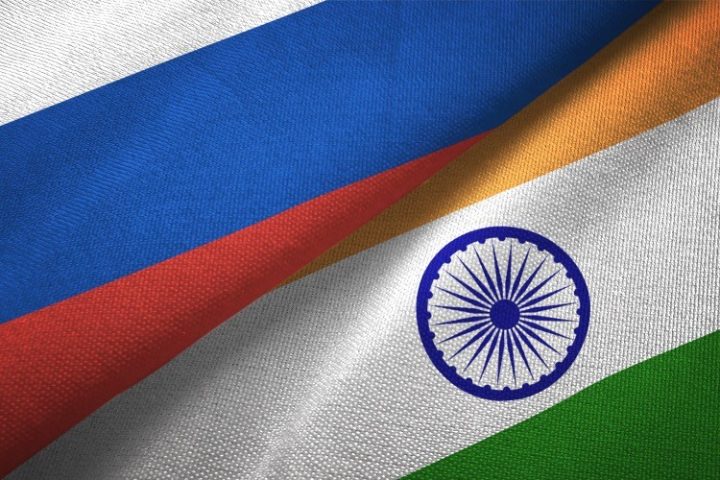
The possibility of World War III is a looming presence that is felt increasingly strongly as global tensions rise.
Yet fears and talk about a full-scale armed conflict that will engulf most of the planet in the way the first two world wars did miss the mark and muddy the actual situation.
In truth, a world war is already taking place — but in strict terms, it’s another cold war. Because the reality is, it’s highly unlikely that the rivalry between the world’s great powers will ever become “hot” and escalate into a global conflict in the same sense as World War II, although there are sure to be many more proxy military contests in the future beyond Ukraine.
This is because the regimes leading the great powers learned from the past. They saw how destructive the world wars were to their civilizations and they realize that such devastation isn’t of benefit to them.
While Russia’s Vladimir Putin and China’s Xi Jinping may be power hungry and amoral, they are not lunatics with a death wish. They want to preside over stable, wealthy empires — not crumbling, war-torn ones. They realize that a “hot” World War III would only tank their economies, which rely heavily on trade, and make them vulnerable to regime change from a disgruntled populace.
These leaders also understand the realities of current geopolitics. They know that, unlike during World War I or World War III, today, the great powers are immune to invasion and conquest by their rivals — due to a combination of geography, political alliances, and modern weapons technology.
China and Russia know that they cannot invade and conquer the United States. Or western Europe. Nor can the western powers hope of invading and conquering Russia or China. A conclusion like that of World War III, which ended in Europe with the successful invasion of Germany and in the Pacific with the bombing of Japan, cannot happen on any side today.
Even in the case of Japan, historians still debate whether American forces would have been able to conquer the island and prompt its surrender without the use of the atomic bomb. So simply extrapolate that to China today and you’ll easily see a land war in China is not going to happen.
This is especially true since, unlike during World War II, the United States can no longer use nuclear weapons since it is no longer the only country that has them; all of its rival powers do as well. If any nation employs nuclear weapons, their enemies retaliate and the whole world burns. None of the players on the world stage want this, so none will dig into their nuclear arsenal.
For this reason, the military conflicts that do take place during this third world war are going to be smaller in scale and confined to contested small nations with relatively low stakes, but with big long-term implications — as in the case of Ukraine. Or they will be limited to confined and very specific theaters — such as contested waters and islands in the South China Sea.
But beyond the limited military level of war, the third world war is being waged in economic, technological, informational, and diplomatic terms. America’s rivals long ago realized that the best way to defeat a giant such as the United States is to beat it in those spheres without having to fire a single shot.
When you look at how dependent the United States is on Chinese manufacturing and how much American debt China owns, you realize who’s winning the war.
Building and losing political alliances is part of the war. Having the right alliances can allow one power to militarily checkmate its competitor without having to resort to actual violence. For instance, NATO is what allows Europe to collectively maintain security from a Russian invasion, even though there are several European nations Moscow could successfully invade individually.
Taiwan also maintains its independence thanks to claims of protection from the United States, although as U.S. power wanes, China will be increasingly emboldened to launch an attack. China will invade Taiwan when it sees that America has reached the point that it will not move to defend the island nation.
One big piece of the puzzle is India. By some measures, India has now surpassed China as the world’s most populous country with more than 1.4 billion inhabitants.
While India has not yet reached the global status of China, Russia, and the United States, it could very well get to that point. It already has nuclear weapons. It has proven that it can produce educated and competent technical workers, as evidenced by many of those who have been “exported” to the United States via migration or otherwise have displaced American white-collar workers via offshoring.
India also borders China. As recently as 2020, soldiers from the two countries exchanged gunfire during a confrontation at the disputed Himalayan border.
It isn’t surprising that, given the vital role India could play as a spoiler to Russo-Sino supremacy in Asia, Russia has carefully moved to add New Delhi to its column. Moscow has helped India build up its military and become India’s fourth-largest source of imports — especially crude oil.
Expectedly, India has not criticized Russia over the Ukraine War and it declined joining in western sanctions against Moscow.
In a war in which most battles are fought by statesmanship and trade rather than by firearms, India is a major battleground. If the Russo-Sino alliance successfully converts India to its cause, the United States will find its influence in the eastern hemisphere virtually evaporated.




